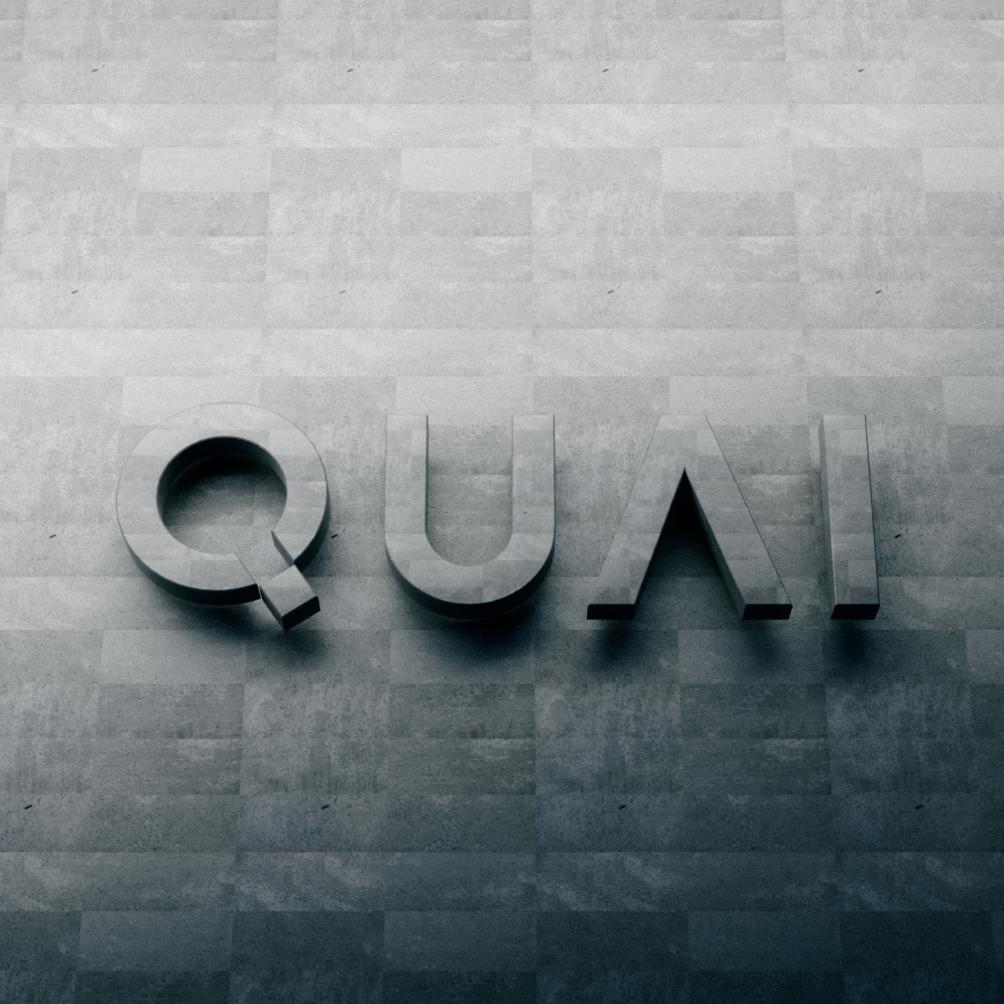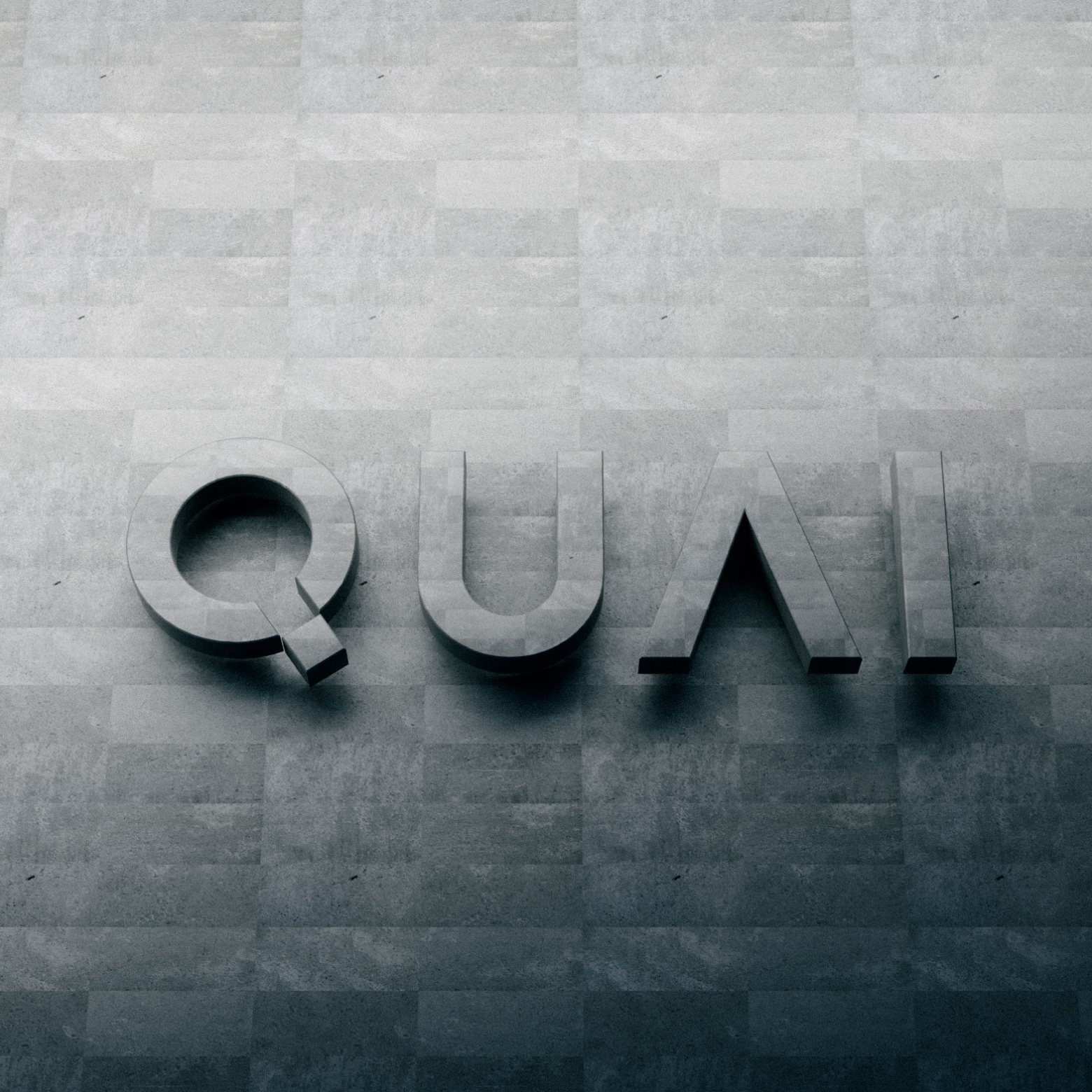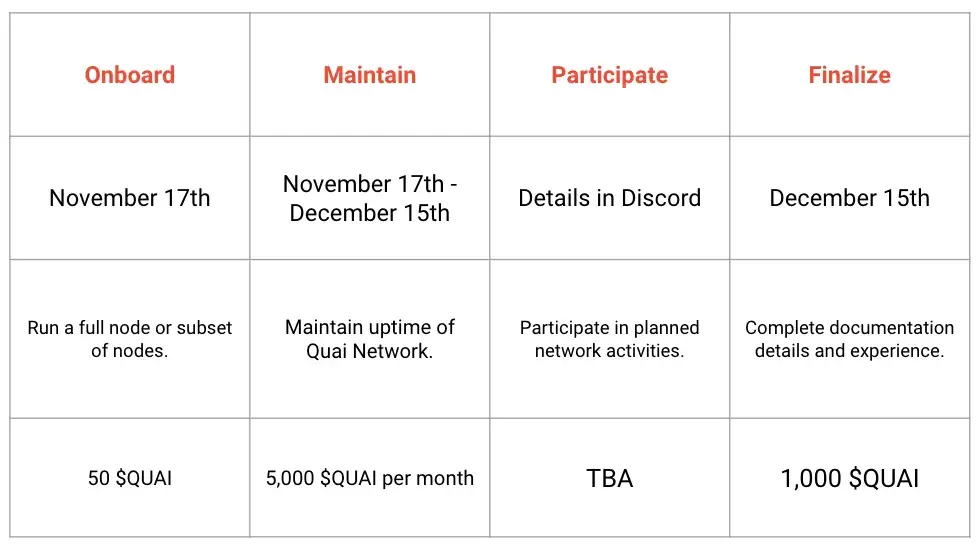
Earn $QUAI in exchange for validating & transacting on Quai Network.

Today, we are excited to announce the Stone Age, the incentivized Alpha testnet for Quai Network. The Stone Age Testnet will be the first step in building a robust foundation for Quai Network development and stability. By taking part in the Stone Age, you are eligible for rewards based off of blocks mined, types of transactions sent, and overall node uptime.
The Stone Age Testnet will be many people’s first experience with Quai Network. With that in mind, our team is going to work endlessly for everyone to get the most out of what we are building. The Stone Age Testnet will lay the foundation for what is to come with the Mainnet Rewards Program and Quai Network as a whole.
Quai Network is an open-source Proof-of-Entropy-Minima blockchain network utilizing the capabilities of merged mining to increase throughput and security. Users of Quai Network will enjoy fast transaction times without compromising core blockchain values. Through the use of a connected hierarchy, miners will have competitive mining opportunities across the many blockchains within the network.
Capable of thousands of transactions per second, Quai Network is a new solution to scalability that will be ready for the masses soon.
Stone age Testnet Details & timeline

Planned Mainnet Features
- Interlink trimming state rent
- Quai generation via faucet
- Usable and secure form of protocol-based DNS
- Revolutionary monetary policy based on TVL and usage mechanics
- Stable protocol based FIAT ($USD) token generation
- Bonding interest rates for negative impulse stabilization
How to sign up for the stone age testnet
- Join our Discord and visit the Testnet Starter channel
- Fill out the Stone Age Tester submission form
- Review our Developer Documentation
Join us to build a better blockchain.
Quai Network is an open-source Proof-of-Entropy-Minima blockchain network utilizing the capabilities of merged mining to increase throughput and security. Users of Quai Network will enjoy fast transaction times without compromising decentralization and security. Miners will have competitive mining opportunities across the many blockchains within the network.
Capable of thousands of transactions per second, the Quai Network is a new solution to scalability that is soon to be ready for mainnet release.
Terms & Conditions / Disclaimer
The entirety of the Quai Genesis grants program, including the content of this article, is subject to the Terms and Conditions outlined here.
Opinions, ideas, and statements shared in this update are delivered with numerous assumptions, risks, and uncertainties which are subject to change over time. There are multiple risk factors, including those related to blockchain, cryptographic systems, and technologies generally, as well Quai’s business, operations and results of operations, that could cause actual results or developments anticipated not to be realized or, even if substantially realized, to fail to achieve any or all of the benefits that could be expected therefrom. We reserve the right to unilaterally, completely, or partially change plans, expectations, and intentions stated herein at any time and for any reason, in our sole and absolute discretion, and we undertake no obligation to update publicly or revise any forward-looking statement, whether as a result of new information, future developments, or otherwise. ACCORDINGLY, WE RECOMMEND THAT YOU DO NOT RELY ON, AND DO NOT MAKE ANY FINANCIAL DECISION OR INVESTMENT BASED ON, THE STATEMENTS CONTAINED IN THIS UPDATE OR ANY OF OUR UPDATES/ARTICLES — INCLUDING BUT NOT LIMITED TO ANY SELLING OR TRADING OF QUAI TOKENS, ETHER, OR ANY OTHER CRYPTOGRAPHIC OR BLOCKCHAIN TOKEN, OR THE SECURITIES OF ANY COMPANY.
The views, opinions, and statements made in this update are those of an individual author and not those of any institution, University, or legal entity operating within the jurisdiction of The United States or beyond. There is no association between these views, opinions, and statements and any for-profit or non-profit entity, particularly with Universities, Foundations, and other Agencies located within the United States. Any perception of such an association is purely accidental, and will be rectified immediately if brought to our attention by the reader.
